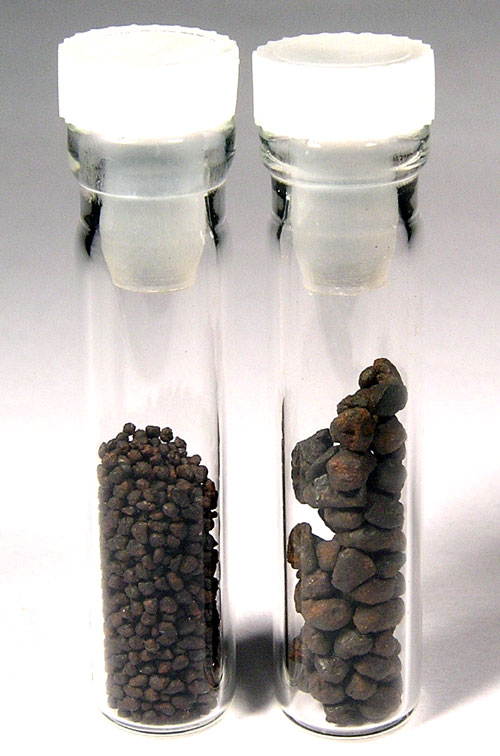|
|

|
1 gram of 0.4mm diameter spheroids & 1 gram of 1.4mm diameter spheroids. Iron, IAB-MG
TKW 30 metric tons. Observed fall: no. Impacted about 50,000 years ago. Found 1891 in Coconino County, Arizona, USA, between Flagstaff and Winslow.
Found at the arrow (green or red) on this map.
Jeff writes:
Canyon Diablo Metallic Spheroids are found in the soil surrounding the famous Meteor Crater in Arizona. When the large body that created Meteor Crater impacted, the majority of it vaporized. This created a huge cloud of hot Iron/Nickel vapour and as the cloud cooled, the iron started to condense and fall from the sky as an Iron/Nickel rain. The ground within about 8 kilometres of the crater contains a huge quantity of these droplets but they are very difficult to separate out. Dr. Harvey H. Nininger talks about the spheroids in his 1972 book; “Find A Falling Star”. Nininger realised that these spheroids probably represented the missing main mass of the Canyon Diablo meteorite that others had believed would still be found buried deep within the crater. These spheroids were originally collected by Harvey Nininger.
Click to view larger photos #1
Meteorites Australia
|
| |
John Divelbiss
6/5/2018 1:14:05 PM |
I re-read the Nininger chapter on these spheroids...on Jeff K's Meteorites Australia site. No mention of size so it must be random, and the concentration for them being higher near the crater. Makes sense. |
John Divelbiss
6/5/2018 12:21:08 PM |
I don't recall if size had a relationship to distance or location from the crater. Was it relative "iron humidity" in the vapor cloud by location/distance away. Anybody recall if size of sphere and location found was a just a matter of them being mixed together in sizes, or separated by size in areas? And if the latter...why? |
| |
|